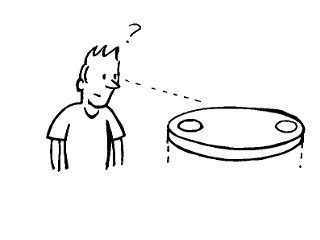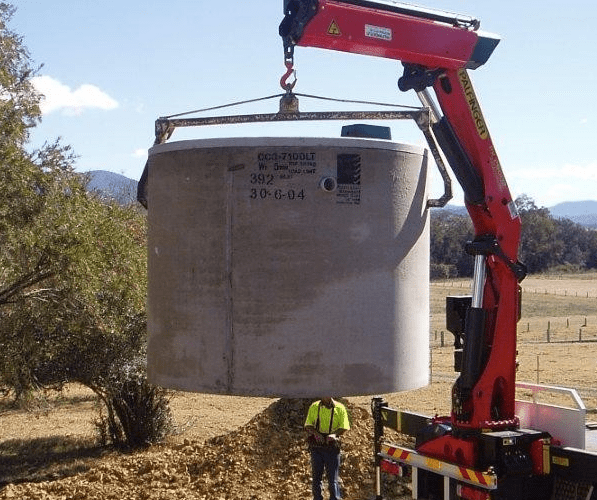Leaks from your septic tank can be hazardous, but with regular servicing, you would hope this wouldn’t occur.
Unfortunately, these things do happen from time to time as a result of irregular servicing or faulty tanks (not ours of course!).
For basic leaks, it is actually unlikely that you will notice them as they will occur under the ground. However, blockages and other complications will have much more noticeable signs that will give you a pretty clear indication it is time to get a service, a pump out, or even have your septic tank replaced.
If you have read our Septic System Do’s & Don’ts guide, we recommend you do so!
Tank To Full
If you have a septic tank with an absorption trench, the water level should never be higher than the outlet pipe. For pump-out systems, the tank should not exceed two-thirds full.
Low Liquid Level
This is the most common indicator of a leak underground. It is likely that you wouldn’t notice this because you are continually adding liquid to the tank, but this can be picked up when thoroughly inspecting the tank. You will be able to notice that the liquid level is lower than normal, meaning it is escaping somewhere.
Too Much Sludge And Scum In The Tank
Septic tanks are designed to hold solid waste (scum and sludge) while allowing only liquid effluent to flow out to the absorption trenches. Over time, the solids build up in the tank. If the tank isn’t pumped out (de-sludged) regularly, it can overflow with untreated wastewater and solids, blocking pipes and damaging the trenches. Your tank should be pumped every 3 to 5 years to avoid system failure.
Liquid Flow Back Or Pooling Water
If there is a blockage or your septic system is full, you may notice pooling water in the yard. When the tank reaches its capacity, solid waste can clog the pipes, which forces the liquid to the surface. This may look like you’ve had heavy rainfall, and the grass is yet to absorb the water. If it does not absorb, it is likely that the liquid will flow back.
Slow Drains
Slow-draining water that cannot be fixed using septic-safe drain cleaners or unblocking products may be the result of blocked pipes caused by a full tank. Keep an eye on your sinks, bathtub and toilet and pump out your tank if necessary.
Bad Smells
This is typically where you get a sense that something is wrong, even if you can’t see any visible signs. If there are unexplained, unpleasant smells persisting on your property, it’s worth contacting Garden Master to do a service and check for blockages.
Sewage Backup
In this situation, you would be at the critical point where it is time to call in expert help. This will happen in the lowest drains first, so if you have a basement and have noticed a bad smell, check there first. A sewage backup is messy; you should never try cleaning it up yourself. Call for professional help immediately.
If you notice any of the above signs or feel there may be a leak or blockage, the next best step is to call Garden Master Waste Water Solutions. Septic Tank leaks can be unsafe and unsightly; it is always best to call in experts and resolve the situation as soon as possible to avoid further damage or complications.
Recommended Reading: Septic System Maintenance Guide
17 Easy Ways To Save Money On Septic System Maintenance
With a little forward planning, you can save thousands in septic system repairs. Many of these tips reduce the volume of wastewater entering your system and avoid harmful chemicals that disrupt natural bacterial processes. Here’s how:
In The Laundry
Spread out your loads: Wash laundry over several days to avoid overloading your system with too much water at once.
Use low-phosphorus detergents: Phosphorus contributes to water pollution and algal blooms.
Fix leaks: Repair dripping taps and leaking cisterns to reduce excess water use.
Catch the lint: Fit a lint filter to your washing machine outlet (even a stocking will work) to protect your trenches.
Avoid harsh drain cleaners: Use boiling water or a drain eel to clear blockages. Avoid caustic soda and commercial drain cleaners—they harm your septic system.
Choose a front loader: Front-loading washing machines use less water and detergent—ideal for septic systems.
In The Kitchen
Use a sink strainer: Stop food scraps from entering the system—they slow digestion and cause solids to build up faster.
Dispose of fats properly: Never pour oils or grease down the sink. Let them solidify in a container (like an empty milk carton) and bin them, or compost small amounts.
In The Bathroom
Install low-flow fixtures: A low-flow shower head and dual-flush cistern save significant water.
Fix leaky taps: Every drop counts.
Limit chemical cleaners: Harsh chemicals disrupt your tank’s natural bacteria. Use alternatives like baking soda, vinegar, or mild soap solutions.
Flush wisely: Never flush grease, wipes, plastic, tampons, condoms, paper towels, or cat litter. These clog the system and increase the need for pump-outs.
Turn off taps: Don’t leave taps running unnecessarily, like when brushing teeth.
Consider this tip: “If it’s yellow, let it mellow” can help save water—many rural homes do this. You might even plant a citrus tree nearby!
Around The Tank & Absorption Field
Redirect stormwater: Keep roof runoff and paving drainage away from your absorption trenches to prevent flooding and system overload.
Install an effluent filter: Ask your plumber to fit a filter on the tank outlet—this stops solids from escaping and extends trench life.
Keep plants in check: Only plant grass near trenches. Tree and shrub roots can damage pipes.
Avoid pressure: Don’t park or drive on the absorption area—this compacts the soil and can damage the infrastructure.
Use the right plants: Grow nutrient-tolerant species near drain fields and irrigation zones.
Recommended Reading: What Plants Can You Plant Around A Septic System?
Garden Master offers septic tank servicing and septic tank cleaning from the Hunter Valley and across the Greater NSW region, as well as new septic tank and wastewater system installation throughout NSW, Victoria and the ACT. We’ve also completed commercial projects in the Arnhem Land, the Kimberleys and even Alaska in the USA!
For any enquiries about your existing septic system or to get a free quote on an installation, give us a call at 1800 632 582 or submit an enquiry online.




